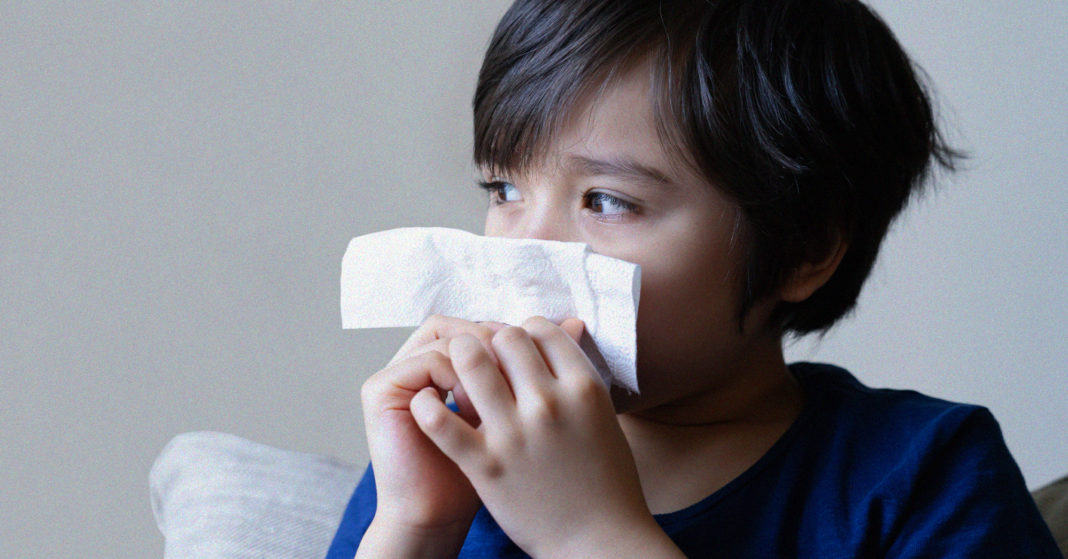The new flu season began last Thursday, but its impact could be less severe in the time of COVID-19.
Some people have been masking up, religiously bathing in hand sanitizer and separating themselves six feet or more from others for the past six months.
Could this mitigate the severity of the flu?
“I can say if people get their flu shots this year and continue to wear masks, continue to wash their hands frequently and continue to social distance, we have the opportunity for a less-deadly flu season,” Allison Winnike, CEO and president of the Immunization Partnership in Houston, told Reform Austin.
Winnike said with safety restrictions reduced or modified, determining if COVID-19 measures could have a beneficial effect during the current flu season is difficult.
“Texas is opening back up. Kids are going back to school. People are going out to restaurants and bars.”
She said constant adherence to protection mandates and social restrictions could amplify mental fatigue as the holiday season nears.
“We just don’t know if our behavior will continue.”
However, Winnike said, it’s important to remember that COVID-19 personal protective procedures are just part of a broader protocol that needs to include a flu shot. She insists that maintaining COVID-19 precautionary measures along with receiving a flu vaccination are the keys to preventing the contraction of the flu virus.
The Texas Department of State Health Services is also encouraging Texans to get their flu immunization, indicating that while it won’t prevent COVID-19, it will impede the circulation of the virus throughout the state, preserving medical resources needed for coronavirus care.
According to the Centers for Disease Control and Prevention, there are four types of flu viruses. Two of them, human influenza A and B, consistently cause epidemics in the United States each year.
But current COVID-19 safety protocols could result in a more moderate flu season due to decreased contact and exposure, said Dr. Jean Patterson of the Texas Biomedical Institute in San Antonio.
“There is a very good chance that we will have a milder flu season if everyone continues to follow the protocols to block transmission of COVID,” wrote Patterson, who focuses on developing therapies and vaccines to battle naturally occurring pathogens, in an email sent to Reform Austin. “There has been a lighter flu season in the southern hemisphere this year once COVID protocols were put in place.”
Shots will help protect health care workers from contracting the flu said DSHS Commissioner Dr. John Hellerstedt, in a press release issued on Sept. 30, adding “the same precautions Texans are already taking against COVID-19 – wearing masks, physical distancing and hand hygiene – will help slow the spread of influenza.”
Both viruses are transmitted via coughing and sneezing, Patterson said.
“Flu gets carried in fluid droplets and can desiccate and inactivate more quickly. COVID is believed now to be truly airborne and can move farther than if it was just carried by droplets,” he said.
But with flu season in effect, there is a possibility of contracting the viruses concurrently. The CDC said health experts are still researching how prevalent this threat could be.
“SARS-CoV-2 and flu use different receptors and there have been some, not proven, reports of having both COVID and flu simultaneously,” Patterson said. “What the CDC recommends is that if you have COVID to not get a flu shot during that time, as you might be spreading COVID to a health care facility. But do get the flu shot when you are well.”
A “twindemic” could be a real scenario, Winnike said. That is why she said getting a flu shot by the end of the month is crucial.
“We don’t know how nasty this year’s flu virus will be … and the thing is our health care system is already stretched thin with coronavirus patients,” she said. “A person that could contract both the flu and COVID-19. They would, unfortunately, have a low chance of survival. These are viruses that we do not have cures for.”
For more information on the flu immunization, please visit https://www.immunizeusa.org/flu.








